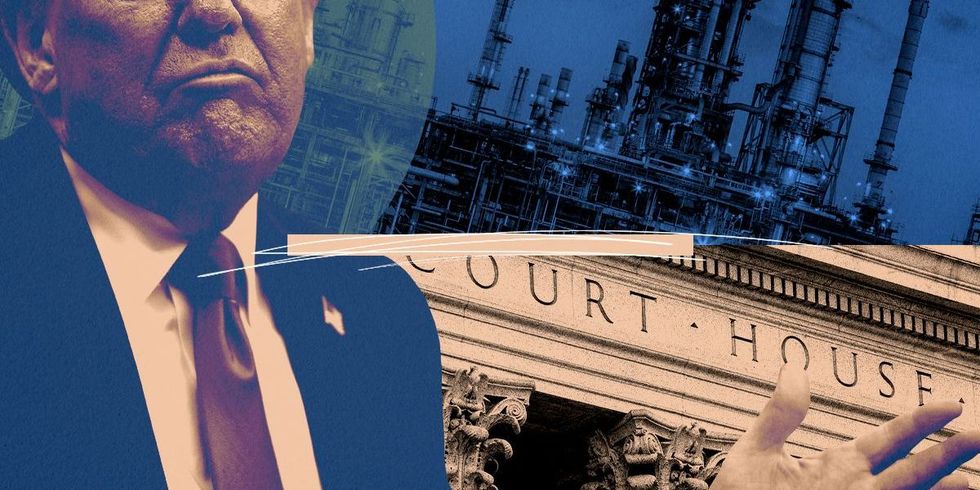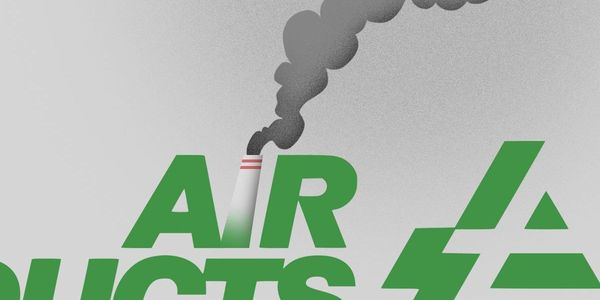
The Internal Contradictions in Trump’s Climate Strategy

The Trump administration filed lawsuits this week against four states that are pursuing compensation from oil and gas companies for climate change-related damages. But Trump’s separate aim to revoke the government’s “endangerment finding,” the conclusion that greenhouse gases pose a threat to public health and should therefore be regulated under the Clean Air Act, could directly undercut the legal basis for the suits.
In each of the cases, the Trump administration is arguing that the Clean Air Act preempts the states’ actions. But if the Environmental Protection Agency rules that the Clean Air Act does not, in fact, require the federal regulation of greenhouse gases, that argument could fall apart.
Two of the lawsuits target Vermont and New York for their new “climate superfund” laws that require the companies responsible for the greatest amount of emissions over the last three decades to pay into a fund supporting adaptation and disaster response. The Department of Justice is also suing Hawaii and Michigan to block them from suing fossil fuel companies for damages for climate change-related harms. Neither state had actually filed such a lawsuit yet, although both had expressed interest in doing so. (Hawaii went ahead and filed its suit on Thursday night.)
“I just want to start by saying that these lawsuits by the government are totally unprecedented,” Rachel Rothschild, an assistant professor of Law at Michigan State University, told me when we hopped on the phone. To her knowledge, never before has the federal government tried to preemptively stop a state from filing a liability case against companies.
In an executive order in early April, Trump had directed Attorney General Pam Bondi to “stop the enforcement” of state climate laws and actions that “may be unconstitutional” or “preempted by federal law.” The order singled out lawsuits against oil companies as well as climate superfund laws, calling both a form of “extortion” and a “threat to economic and national security.”
Nevermind that climate change is a major threat to economic and national security, and states have filed these lawsuits and created these laws because they are scrambling to find ways to pay to address the unprecedented damages brought by the increasing severity of wildfires and floods.
Even before Trump took office, Rothschild said, the federal government had warned states that they were going to need to take more responsibility for preparing for and responding to increasing natural disasters. “[States] do not have the resources alone to address this problem,” said Rothschild. “These companies have engaged in an activity that causes external harms that they’ve not taken into account as part of their business practices, they’'re imposing all the costs of those harms on states and citizens, and they should be liable to help us deal with the resulting problems. That’s a very normal activity for tort suits.”
Dozens of states have filed similar lawsuits seeking damages from oil companies. (A Justice Department press release did not say why it was singling out states that had not taken any legal action yet rather than targeting those that had.) Many of these lawsuits have been stuck in a holding pattern for years, though. “Climate superfund” laws are a new legal strategy, modeled on the federal superfund program, that some states are testing to get oil companies to pay up.
The DOJ’s lawsuits claim that states cannot fine oil companies for their emissions because that authority lies with the federal government under the Clean Air Act. That argument is underpinned by the Environmental Protection Agency’s endangerment finding, which stems from a 2007 Supreme Court ruling that greenhouse gases are a pollutant as defined by the Clean Air Act, and therefore the EPA must determine whether these emissions pose a threat to public health. The court said that if the agency finds there is enough scientific evidence to say greenhouse gases are harmful, it must develop regulations to rein them in. EPA officially made this finding in 2009.
This was a big headache for Trump during his first term. He wasn’t allowed to simply repeal Barack Obama’s greenhouse gas rules — by law, he had to replace them. If he’s able to reverse the endangerment finding, however, he could undo climate protection rules and that would be that.
At the same time, he’d make oil companies much more vulnerable. “There is great concern that reversing the finding would open the door to a lot more nuisance lawsuits against all types of energy companies,” Jeff Holmstead, a partner with Bracewell, a lobbying firm, told E&E News. “It would eliminate one of the best arguments that oil companies have used to get lawsuits against them dismissed,” he added.
EPA administrator Lee Zeldin will face an uphill battle in reversing the finding, as there is a mountain of scientific evidence that greenhouse gases cause dangerous climate change. But Zeldin may instead try to argue that the EPA did not consider the cost of addressing these emissions when it made the initial finding — and that the costs of reining them in outweigh the costs of emitting freely.
Legal experts are skeptical this argument will go anywhere, either. In 2012, the D.C. Circuit Court found that the EPA’s endangerment finding should be based on science, not economics. Cost-benefit analyses and other policy considerations are relevant if the EPA finds that greenhouse gases do, in fact, pose a threat, but they “do not inform the ‘scientific judgment’” that the law requires the EPA to make, the judge ruled. Meanwhile, the Supreme Court’s decision last year to overturn “Chevron deference,” a decades-long precedent that gave agencies broad authority to interpret their statutory mandates, could also hurt Zeldin’s case.
Rothschild, for her part, is confident that states’ superfund laws and tort suits are defensible regardless of what happens to the endangerment finding. These actions have nothing to do with the Clean Air Act, she argued, because they are not an attempt to regulate emissions. “They're trying to impose liability for local, environmental, and public health harms from past activities,” she said.
One thing is for certain: Between states’ lawsuits suing oil companies, oil companies’ countersuits, the DOJ’s new lawsuits against states, and probably future suits against any actions the Trump administration takes on endangerment, there’s going to be a whole lot of new case law about greenhouse gases over the next four years.









